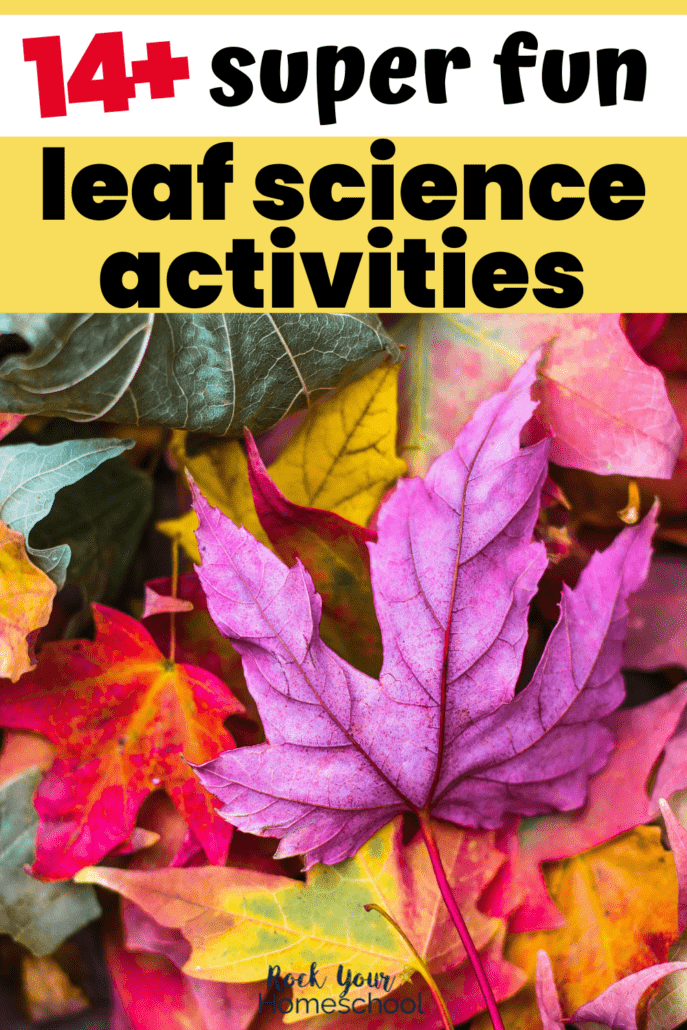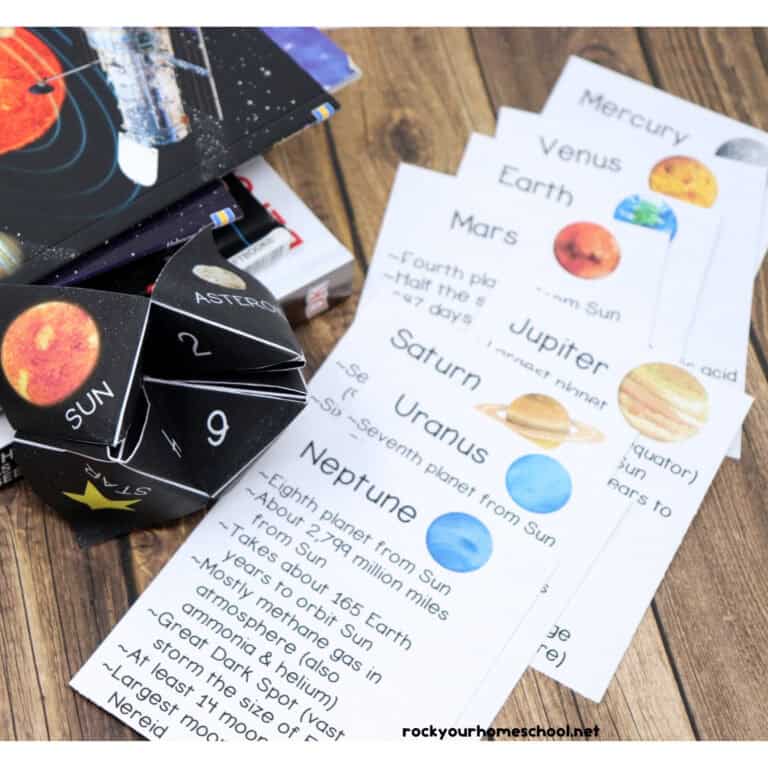Leaf science activities are sensational ways to boost your science fun with a touch of nature.
You’ll find 14+ incredible ideas for using leaves as part of your learning fun with kids.
Take your science lessons to the next level with these hands-on and creative ways to have learning fun with leaves.
RELATED: Enjoy more science fun with these kitchen science experiments for kids!
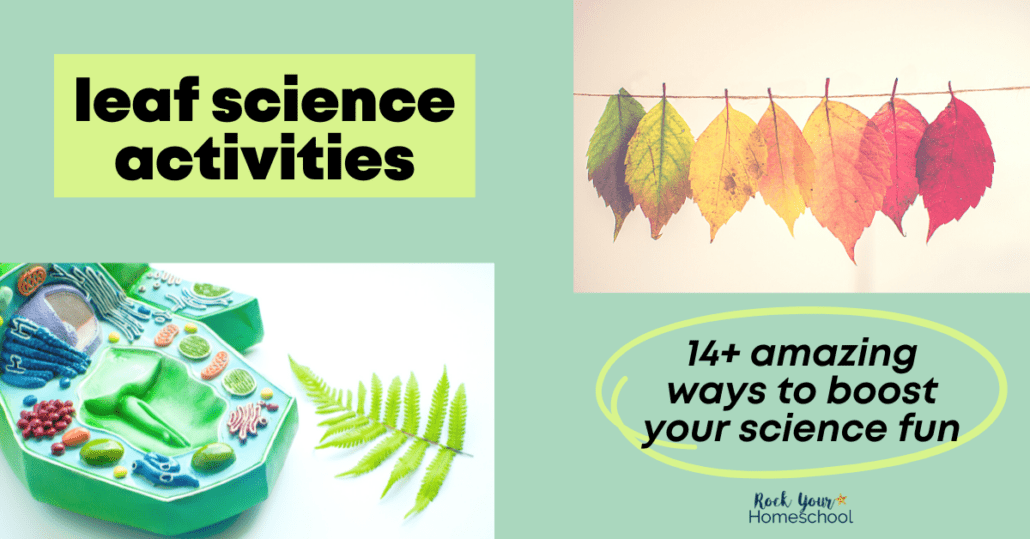
Boost Your Learning Fun with Leaf Science Activities
One of my favorite things to do with my 5 boys is to take our learning adventures outside.
I started by taken my oldest outside as a newborn to get fresh air and experience the world around us. I’d sing songs and chat about my observations.
As he got older, we’d have a blast walking around our yard (we live in a rural area and our property backs up to 2 farms), pointing out things that we noticed and how they were changing with the seasons.
And those outdoor learning adventures continued as we had more boys to the mix!
Oh, and we’d find so many treasures to learn about and enjoy! Acorns, sticks, and rocks. Once autumn rolled around, leaves moved to the top of our treasure list 🍂
Over the years, my boys and I have delighted in a variety of leaf science activities in our homeschool. I wanted to share our experiences and other amazing ideas that I’ve found!
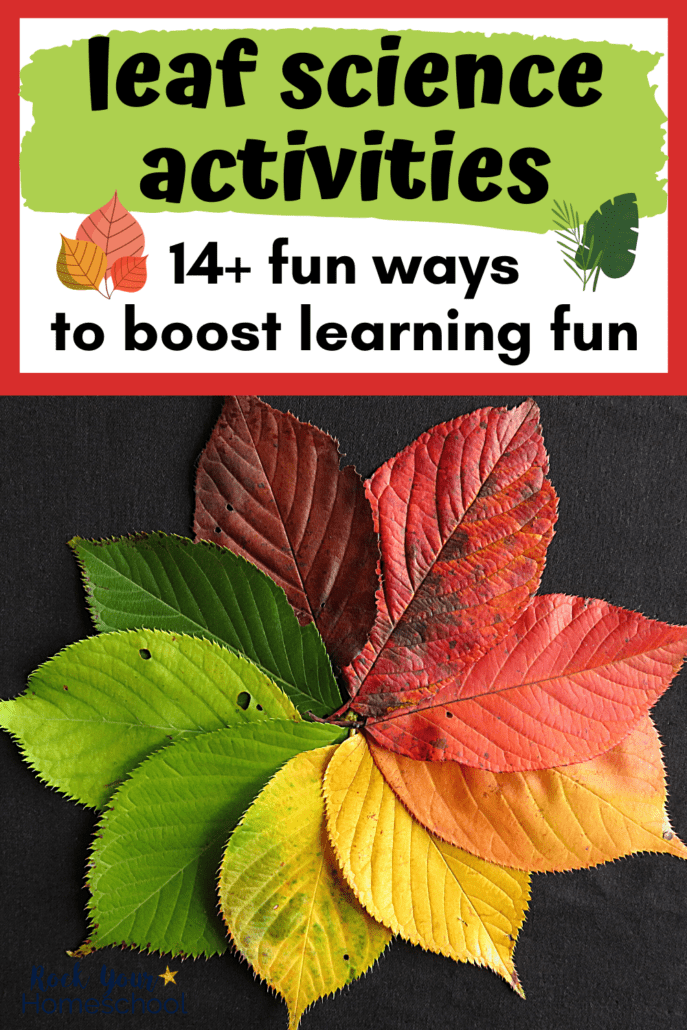
15 Fun Leaf Science Activities to Enjoy with Your Kids
Leaves play an important role in nature. They’re essential for the photosynthesis process which helps plants make food and produce the oxygen we breathe.
There are also many different types of leaves with all kinds of interesting characteristics. Leaves are fun to observe and can teach us so much about the world around us.
Science activities with leaves can help kids learn and appreciate all the ways leaves are important. By observing, collecting data, and conducting experiments, you can learn so much about how they work.
Oh, and make sure to get our FREE printable leaf anatomy diorama kit for a super cool mess-free science project!
Here are fifteen fun and educational activities that you can do with leaves:
1. Observe the Parts of a Leaf
Examine the different parts of a leaf. Most leaves have three main parts: the blade, the petiole, and the stem. The blade is the flattened part of the leaf that does the majority of the photosynthesizing. The petiole is the stalk that attaches the blade to the stem. And the stem itself is what attaches the leaf to the tree branch.
Leaves can have other parts, as well. Look for:
- Blade: the flattened part of the leaf that does the majority of the photosynthesizing
- Petiole: the stalk that attaches the blade to the stem
- Stem: what attaches the leaf to the tree branch
- Margin: the edges of the leaf blade
- Veins: the network of vascular tissue that runs through the leaf and supplies it with water and nutrients
- Apex: the pointy tip of the leaf
- Base: the bottom part of the leaf where it attaches to the stem
Draw a leaf diagram to demonstrate all the different parts.
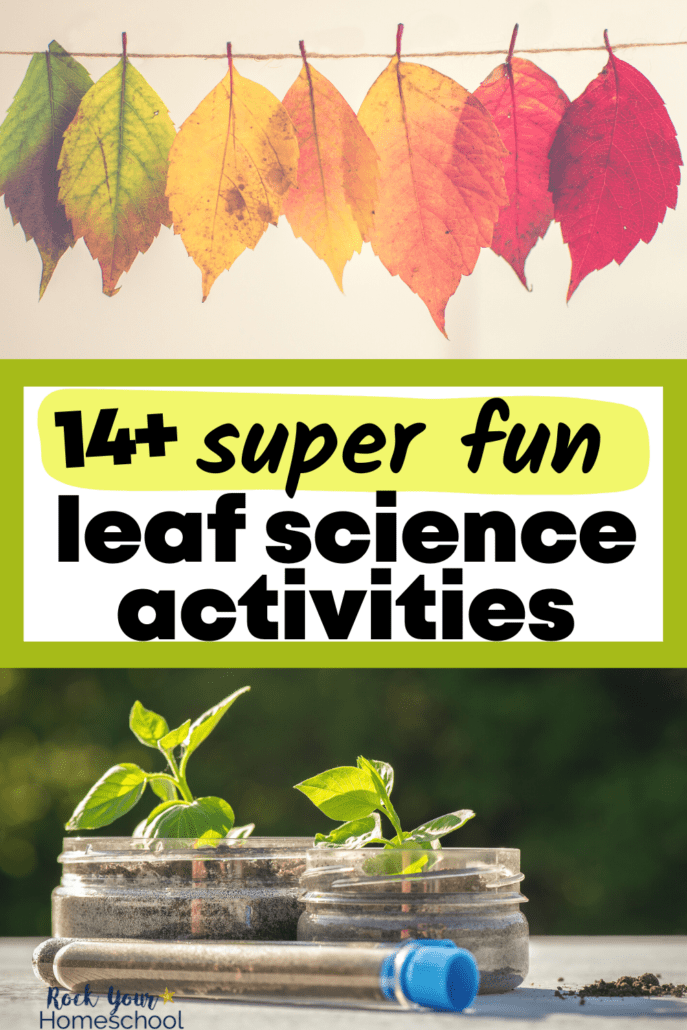
2. Compare and Contrast Different Leaves
There are an endless variety of leaves, each with its own unique shape, size, and color. Compare leaves from different trees or even different parts of the same tree.
Some of the characteristics commonly used to identify leaves include:
- Shape: leaves can be oblong, oval, lanceolate, cordate, triangular, or ovate
- Size: leaves can be tiny (less than an inch) or huge (more than a foot)
- Color: leaves can be green (chlorophyll), red (anthocyanin), yellow (xanthophyll), brown (tannin), or purple (anthocyanin and carotenoids)
- Vein structure: leaves can have parallel veins or a network of veins
- Leaf margin: the edges of leaves can be serrated, lobed, or smooth
Record observations in a science journal.
3. Make Collections for Fun Leaf Science Activities
Many leaves can be found right in your own backyard or a nearby park.
Go on a leaf hunt and see how many different types of leaves you can find. Once you’ve collected a few, arrange them by shape, size, or color.
You could even try pressing and drying some of your leaves to preserve them.
How to PRESS LEAVES
INSTRUCTIONS:
1. Collect your leaves and arrange them how you want on a piece of paper.
2. Place another piece of paper on top and stack something heavy on top, like a large book (or a stack of books!).
3. Leave the leaves for a few days to a week until they’re completely dry and flat.
4. Once they’re pressed, you can glue them into your science journal or a scrapbook.
4. Leaf Chromatography
Chromatography is a process used to separate out the different colors in a substance. You can do this science activity with leaves to see the different pigments that they contain.
How to ENJOY LEAF CHROMATOGRAPHY
What you’ll need:
- A clear glass or container
- A coffee filter
- A paperclip
- A pencil
- Rubbing alcohol
- Water
- Different leaves
INSTRUCTIONS:
1. Cut the coffee filter into a strip that’s about an inch wide and six inches long.
2. Make a small mark with a pencil about ½ an inch from one end of the strip. This is where you’ll put your paperclip.
3. Put the strip into the glass so that the end with the paperclip is touching the bottom.
4. Fill the glass with a mixture of water and rubbing alcohol until it’s about ½ an inch from the top.
5. Place a leaf on top of the coffee filter strip so that the end with the paperclip is touching the leaf.
6. The alcohol will start to travel up the coffee filter strip, taking the pigment with it.
7. Once the pigment has traveled about halfway up the strip, remove the leaf and set it aside.
8. Repeat the process with different leaves to see how the colors compare.
5. Make Skeleton Leaves
Skeleton leaves have had the chlorophyll removed, so all that’s left is the leaf vein structure. This fun activity allows you to see the leaves’ vascular structure. Oak, maple, and other hardy leaves will work. It’s one of our favorite leaf science activities!
How to MAKE SKELETON LEAVES
What you need:
- Washing soda
- Fine bristled tooth brush
- Pot
- Water
- Stove
- Leaves
- Tongs
INSTRUCTIONS:
- Put the leaves, water, and 1/2 cup of washing soda in a large pot.
- Bring the water to a boil, then reduce the heat to a simmer.
- Simmer the leaves for 90 minutes, then remove them from the water with tongs.
- Use the toothbrush to carefully brush the pulp away from the leaf’s veins. Be as gentle as possible!
- Use the tongs or a tweezers to flip the leaf over and repeat step 4.
- Allow the leaf to fully dry.
6. Leaf Printing
Leaf printing is a fun way to create patterns and shapes with leaves. You can use real leaves or leaf shape stamps.
How to enjoy leaf printing
What you need:
- Paper
- Leaves or leaf shape stamps
- Paint (acrylic or tempura work well)
- A paintbrush
INSTRUCTIONS:
1. Place your paper on a flat surface.
2. If using real leaves, gently press the leaf onto the paper. If using stamps, apply an even layer of paint to the stamp and press it onto the paper.
3. Lift the leaf or stamp carefully to reveal your print.
4. Repeat with different colors and patterns.
7. Find Edible Leaves
There are many types of edible leaves to enjoy. Make a meal using as many different types of leaves as you can! Try leaves like:
- Spinach
- Chard
- Taro
- Kale
- Lettuce
- Mustard greens
- Collard greens
- Turnip greens
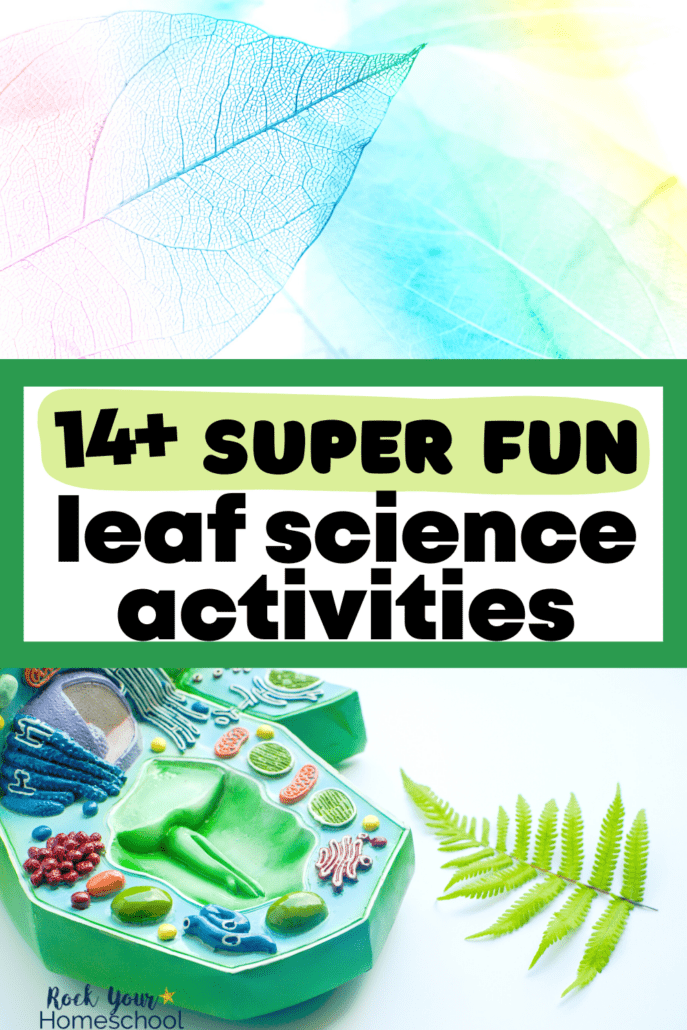
8. Observe Leaves Under a Microscope
Leaves are full of interesting details that can only be seen up close. Have a closer look by observing leaves under a microscope.
Record your observations in a science journal. And use our free plant cells worksheets to boost your leaf science activities!
9. Make Fossils for Leaf Science Activities
Fossils are the imprints of plants or animals that have been preserved in rock. You can make your own leaf fossils using clay or this recipe.
How to make fossils with leaves
What you need:
INSTRUCTIONS:
1. Roll out the clay to about ½ an inch thick.
2. Place the leaf onto the clay and gently press it down.
3. Use the rolling pin or another object to flatten the clay around the leaf.
4. Remove the leaf carefully to reveal your fossil impression.
5. Allow the clay to dry completely before handling further.
10. Freeze Leaves
Observe how temperature affects leaves by freezing them. Simply place them in the freezer for a couple of hours.
Remove the leaves to thaw and note any changes that occur. Record your observations 1 hour later, 5 hours later, and 1 day later.
11. Propagate Plants From Leaves
Many plants can be propagated, or grown, from leaves. It’s fun to see how roots can form over time when propagating from leaves.
Try propagating:
- Philodendrons
- Begonias
- Sansevierias
- Peace lilies
- Snake plants
How to propagate plants from leaves
INSTRUCTIONS:
1. Cut a leaf from the plant, making sure to include a portion of the stem.
2. Place the stem in a jar of water, making sure that the leaf is above the waterline.
3. Change the water every few days and wait for roots to form.
4. Once roots have formed, you can plant it in soil.
12. Dye Fabric With Leaves
Dyeing fabric with leaves is a fun way to add color and pattern to fabric. You can use fresh or dried leaves.
How to Dye fabric with leaves
What you need:
- Fabric (wool works well)
- Leaves
- A pot
- Water
- Stove
INSTRUCTIONS:
1. Place the fabric in a pot of water. If using fresh leaves, add them to the pot as well.
2. Bring the water to a boil, then reduce the heat and simmer for 30 minutes.
3. Remove the fabric from the pot and allow it to cool.
4. Rinse the fabric in cold water and allow it to air dry.
5. If using dried leaves, repeat steps 1-4 using a fresh pot of water.
13. Look for Insect Activity for Leaf Science Activities
Many insects eat leaves or use them for shelter. Look for signs of insects on leaves to see what kinds are active in your area.
Some things to look for:
- Chewed leaves
- Holes in leaves
- Insects themselves
- Egg cases
- Silk webs
14. Make Leaf Confetti
Leaf confetti is an eco-friendly alternative to traditional confetti. It’s also fun to make!
How to make leaf confetti
What you need:
- A sharp knife or scissors
- Hole puncher OR craft holes punches with shapes
- Leaves
INSTRUCTIONS:
1. Collect a variety of leaves in different colors and sizes.
2. Use a sharp knife or scissors to cut the leaves into small pieces.
3. Allow the pieces to dry out, then store in a jar or container.
4. Use the confetti to decorate for special occasions!
Wishing You Tons of Learning Fun with Leaf Science Activities!
Leaves give us so many opportunities to explore the world of science. These activities are just a starting point for leaf-related learning. With a little creativity, you can come up with even more ways to have fun with leaves!
What ideas would you add to this list for learning fun with leaf science activities? Please share in the comments area below 😊
